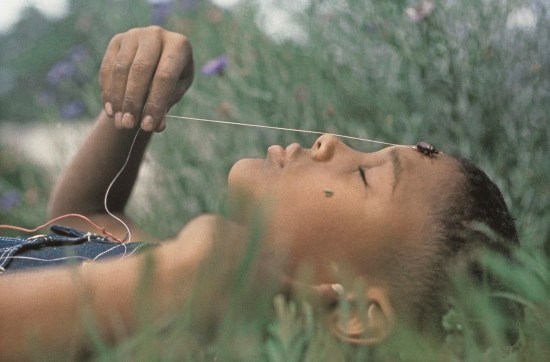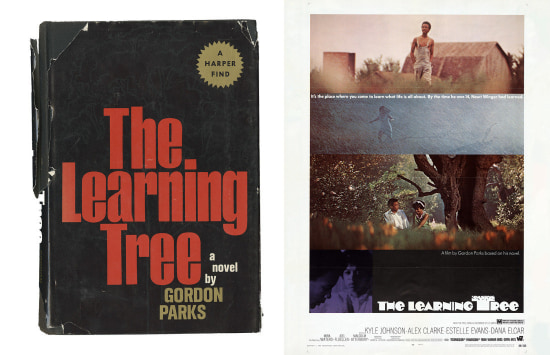
In 1963, Parks published his first novel, The Learning Tree. A semi-autobiographical, coming-of-age story, the novel follows the journey of Newt Winger, a Black teenage descendant of Exodusters growing up in rural Kansas in the 1920s who learns through hard-won lessons how to navigate the injustices of systemic racism. The book’s title is derived from a cautionary word of advice given to Parks by his mother when he departed his hometown of Fort Scott, Kansas. It is later recounted in the book by Sarah Winger, Newt’s mother, during a long evening walk: “Some of the people are good and some of them are bad—just like the fruit on a tree…. No matter if you go or stay, think of it like that until the day you die—let it be your learning’ tree.”
To make visible and symbolic the book’s narrative arc, the year of the book’s publication Parks created a series of color photographs. They are remarkable for the simultaneously idyllic and threatening tone and compositions—echoing the novel’s own conflicted and wrenching narrative. A selection of these images appeared in the August 16, 1963 issue of Life magazine, under the title “How It Feels To Be Black,” accompanied by passages from the book.

Boy with June Bug, Fort Scott, Kansas, 1963.

Left: The Learning Tree, First Edition Book, 1963. Right: Film Poster, The Learning Tree, 1969.
Through the harsh realities and moral impasses encountered by the book’s characters, Parks had created a narrative that symbolically confronted Black life in America, brought to life via images and text, and six years later—as a film. In 1969, Parks further underscored The Learning Tree's deeply personal significance when he adapted the book to a film, serving as its writer, producer, and director. He was encouraged by acclaimed film director and friend, John Cassavettes, to undertake the project. Released in August 1969, The Learning Tree was the first film directed by a Black American for a major Hollywood film studio, Warner Brothers-Seven Arts. The film had a modest budget and wasn’t a commercial success, but it was a landmark achievement in American cinema history that has influenced a generation of filmmakers.